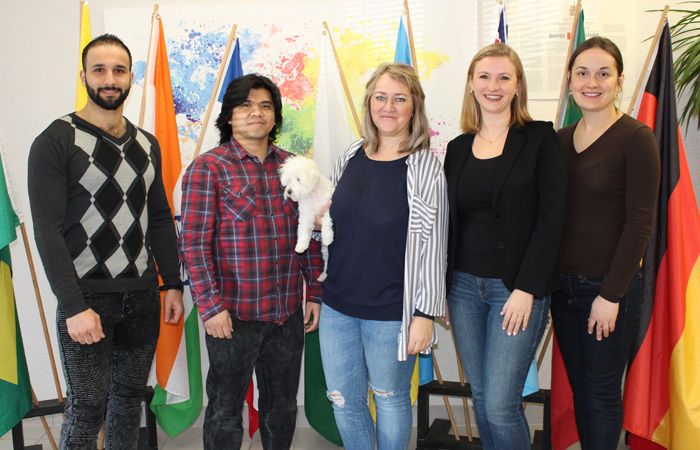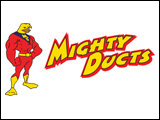In last week’s post we looked at what relevancy means to Mennonite Heritage Village (MHV) today, when most of our visitors no longer have the personal links to our content because our audience is younger and more diverse than it was fifty years ago. We said relevance was a matter of meaningful content and removing the barriers visitors experience in accessing that content. We said that relevance is about bringing new meaning to the table and we looked at how fulfilling MHV’s mission to the best of our ability is the first step in achieving relevance for our museum.
The second step, involves embracing our constituency and stepping into a role as bridge-builders in our increasingly diverse community. As a museum started by the Mennonite community and dedicated to telling a Mennonite story, it can be hard to engage people who don’t have these built-in connections. But if you can’t engage your wider community in a meaningful way, what is the point? So it was with this aspect of relevancy in mind that we reached out to another organization in Steinbach not just to partner, but to dream, with us. For, as Nina Simon, cautioned, “putting up a ‘welcome’ sign is not enough. To involve people in meaningful, sustainable ways, you can’t just make programs FOR them. You have to involve them in their creation.”
Over the last three years, MHV has partnered with various organizations in creating exhibits around its annual theme. In the past, these partnerships have been about sharing resources and while those partnerships benefitted both MHV and our partners, they didn’t change our organization or challenge us to re-think who we are as a museum in Steinbach and the role we play in our city. Our latest experiment in community partnerships has taken us in a different direction. For this year’s The Russländer exhibit, on display now in the Gerhard Ens Gallery, we partnered with Eastman Immigrant Services (EIS).
What made this partnership different from the ones in the past is that we were seeking to impact our organizations to think differently about ourselves, our relationships, our community, and to frame a conversation in our increasingly diverse city of Steinbach about our approach to people new to our community. Rather than coming with a ready-made, completed plan and asking them to jump on board with our vision, we approached EIS with a spirit of curiosity. We knew we wanted a component that would be part of the exhibit, but we didn’t just want to create an exhibit – we also wanted to sew the fabric of community tighter by bringing our two organizations, along with the people we each serve, together. In short, could we make our community a better place, and could we influence others to do the same, by partnering together?
The biggest component of our partnership with Eastman Immigrant Services was our work with five newcomers participating in EIS’ Communications Workshop, which met weekly to work on English written and oral communication skills. I joined their group on several occasions and asked them to bring a personal item that helped them to describe what it was like to leave home and come to some place entirely new. These objects, along with the accompanying stories the participants wrote about leaving home, are included at the very beginning of the exhibit. It is my hope that this section will help our visitors understand the story of the Russländer within the broader contexts of other ethnic, cultural, and religious groups and within our own time, not just some story from the past.
Our partnership with Eastman Immigrant Services was a success in that it started what I hope will be a long and fruitful relationship between the two organizations. It sparked several outreach initiatives, including four projects with local schools (Steinbach Regional Secondary School’s Advanced Photography and English as an Additional Language classes, Stonybrook Middle School’s “Lunch Club,” and one more to come this fall with a grade three class as Southwood Elementary), as well as a storytelling event that we hosted at the museum called “Journeys to a New Homeland,” which highlighted Mennonite and non-Mennonite stories of leaving home and arriving in Canada.
What I’ve learned from this year of our partnership with EIS is that partnerships, even between organizations, are all about heart and being open-hearted and that exhibits are a perfect medium for this challenge. The partnership with EIS has, I think, begun to change our organization and has contributed to helping MHV think of itself as a bridge-building member of our community. My hope for this partnership, and for the ones that we will be embarking on with our exhibits in the upcoming years, is that they will continue to slowly change our heart as an organization. Our mission statement, and the way we have often operated in the past, is premised on the idea that we deserve attention or are worthy of our visitors’ interest and our funders’ support because Mennonite history is inherently worthy – and relevant – in and of itself. I hope that we can continue wholeheartedly with our mission to preserve and exhibit the history of Russian-descendant Mennonites, but that doing so wouldn’t be an end unto itself. Instead, I hope it will gradually become the means to something greater, serving our community by facilitating conservations, listening, building bridges, and, through that, being part of creating a more engaged, stronger, and healthier community.
Director’s note: The Russländer exhibit has just received the Association of Manitoba Museums award of excellence. Congratulations to our Curators and EIS for their wonderful collaboration. Come check it out! Our galleries are open all winter.




